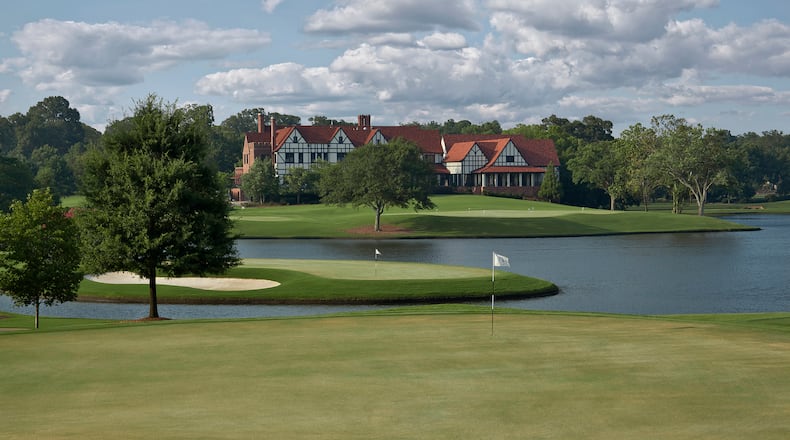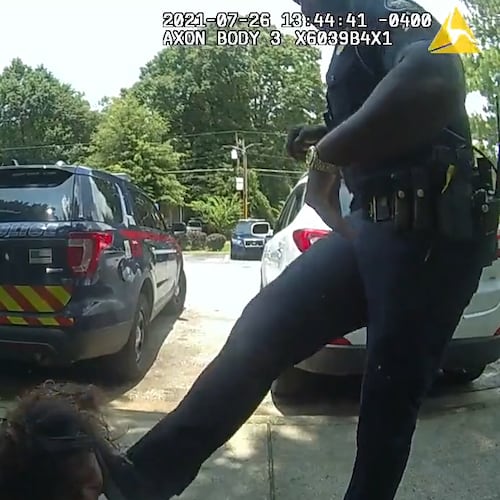Q: How long has Atlanta’s East Lake neighborhood and golf course been around?
A: When the Atlanta Athletic Club sought to add a country club to its name around the turn of the 20th century, the owners chose a large tract of farmland that lent itself well to a golf course with natural drainage and a water source. Construction began in 1904, and the original Cape Cod-esque clubhouse opened in 1908.
At the time, the property was well outside the city center — about 4.5 miles east of downtown. Henry Atkinson, who brokered the transaction to get the land, advocated to extend the Atlanta Streetcar to the area for easier travel. Atkinson, whose company became Georgia Power, was instrumental in East Lake’s creation.
As to how the area became known as East Lake, Chad Parker, general manager and president of the East Lake Golf Club, said he isn’t sure, but it “could have just been because it was east of downtown and there’s a lake here.”
The original structure was rebuilt in 1913 after a kitchen fire burned it down. Lightning scorched the clubhouse again in 1925, and the Tudor-style East Lake Golf Club, as its seen today, was rebuilt in its place in 1926. As the club flourished, people began moving into the area around it, and the East Lake neighborhood developed. In the 1940s and 1950s, East Lake was booming.
By the 1970s, however, general migration of Atlanta’s mostly white residents away from racially mixed urban areas, as well as poor construction and a lack of support networks in the neighborhood, left depressed economic conditions in East Lake. In 1971, East Lake Meadows, a 650-unit public housing complex, opened and quickly became one of the worst ZIP codes for crime in the city, according to Emory University’s Atlanta Studies website.
For 20 years, East Lake saw little change.
Then, in the early 1990s, real estate developer Tom Cousins approached Eva Davis, the community leader of East Lake Meadows, with an idea to create the East Lake Foundation to revitalize the community, Parker said. Cousins and Davis engaged residents, the Atlanta Housing Authority, Atlanta Public Schools and other government and community agencies.
“Everyone had to come around the table and agree that this was a good thing,” Parker said. “It didn’t happen overnight.”
Eventually, they agreed. However, the process came with challenges. The redevelopment model meant that some original residents, particularly the unemployed and those with criminal histories, could not return.
To help fund the neighborhood’s revitalization effort, the for-profit East Lake Golf Club requires a $125,000 membership fee and a suggested $200,000 donation to the East Lake Foundation.
The golf club served as the home course for legend Bobby Jones, who was born in March 1902 and died in December 1971. Parker emphasized the club's motto: Golf with a purpose.
“Any proceeds the club generates is going directly to the East Lake Foundation nonprofit that’s funding the work,” he said.
East Lake also receives funding from other prominent sources like the PGA Tour Championship.
“It’s a powerful thing to be part of,” Parker said. “It’s not just golf.”
Learn about East Lake
PGA Tour Championship returns to last week of August in 2022
How golf, activists saved the once crime-ridden East Lake community
2013: Tom Cousins talks about shaping East Lake’s vision
PBS explores East Lake Meadows public housing history in documentary
East Lake success a model for other troubled areas
East Lake charter school’s strategy breaks barriers of poverty
About the Author
Keep Reading
The Latest
Featured


